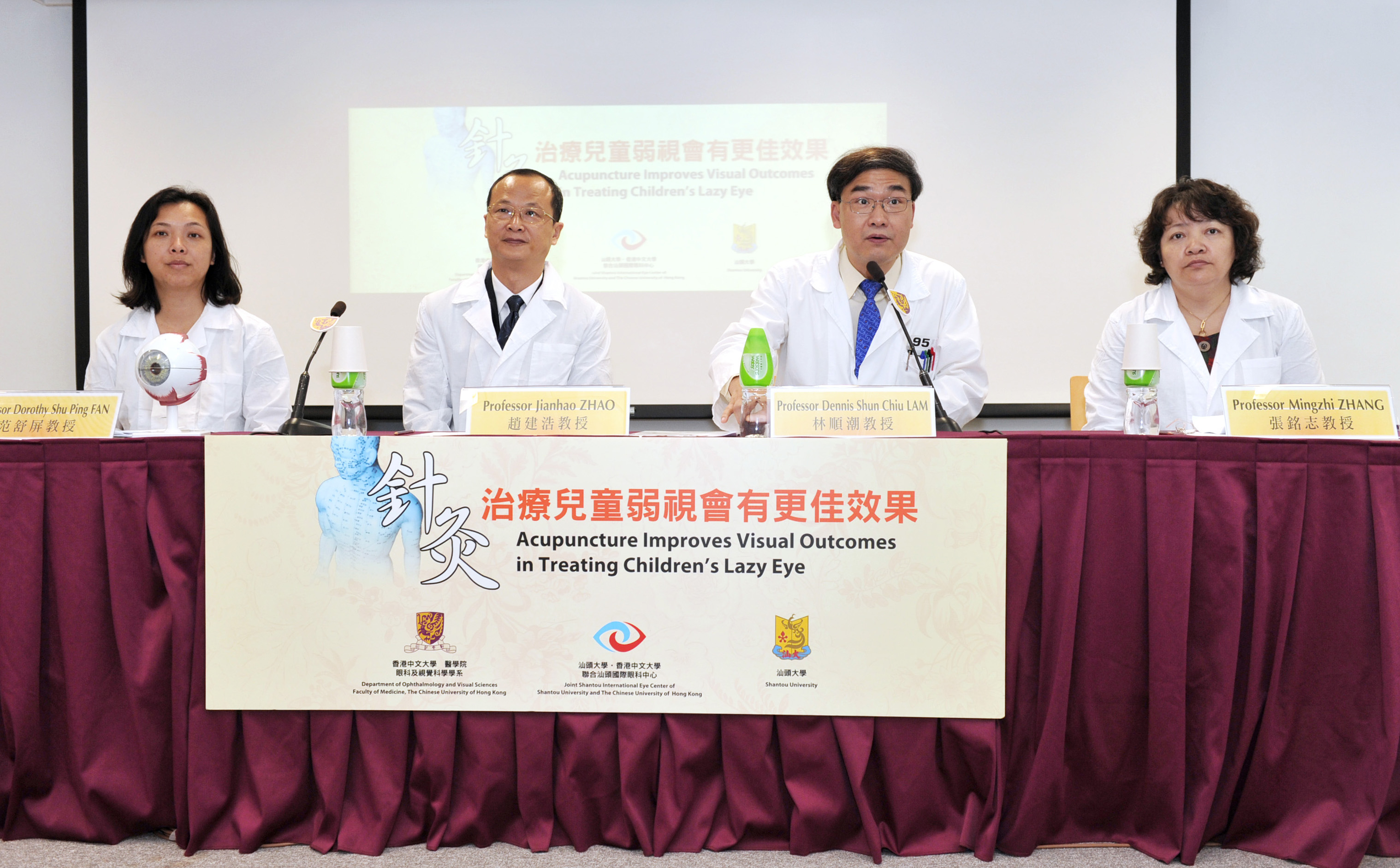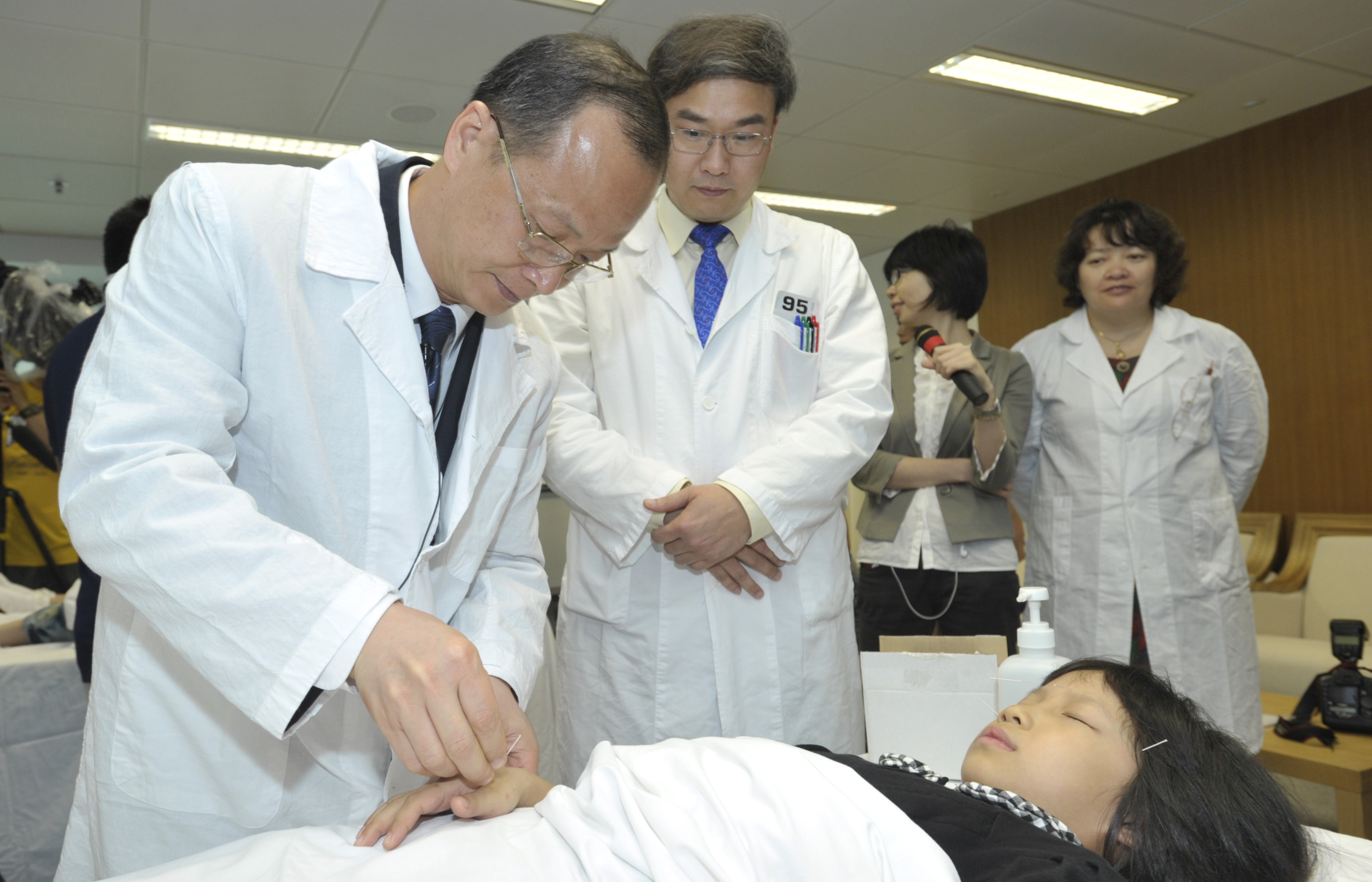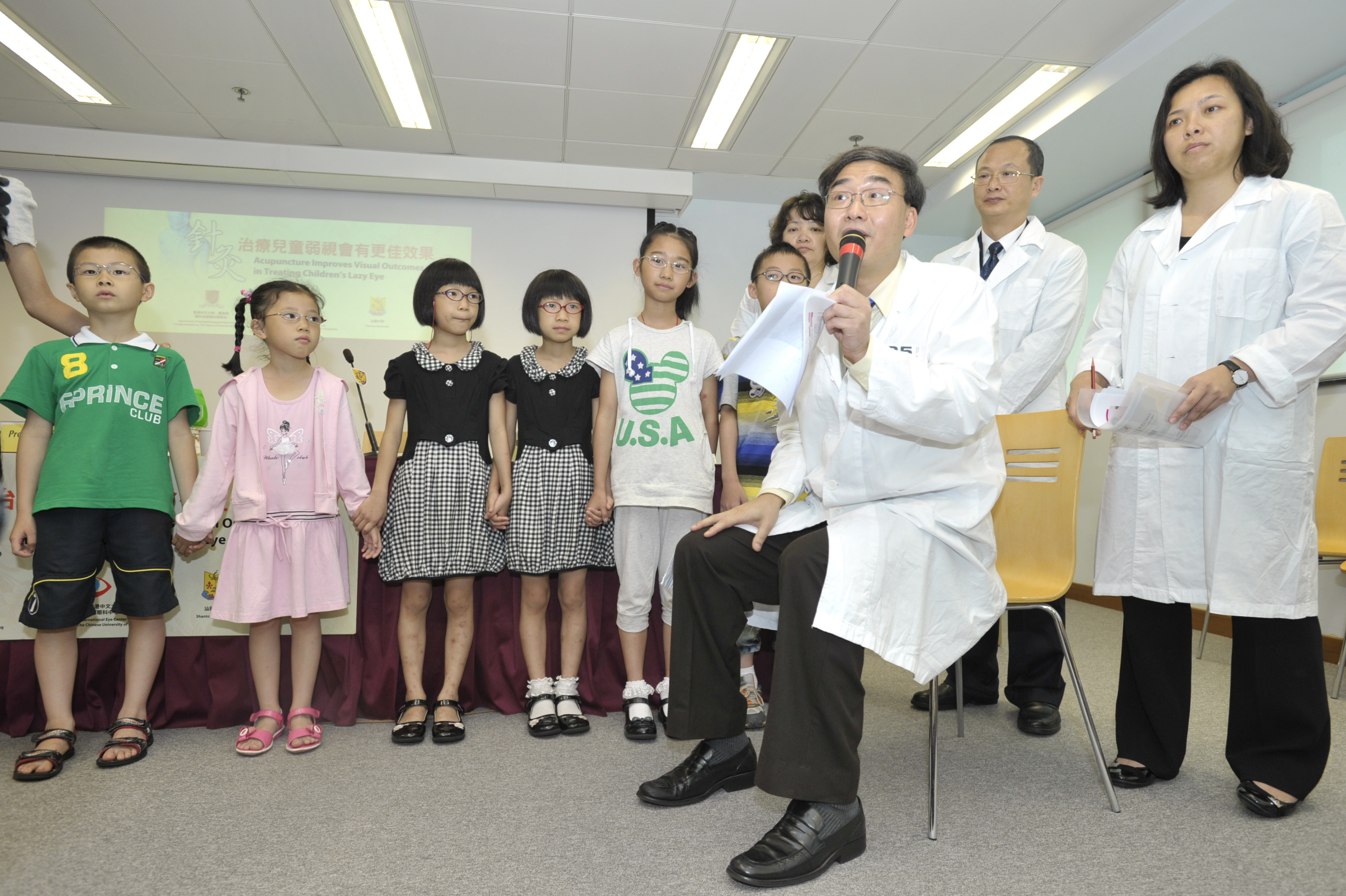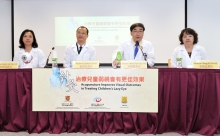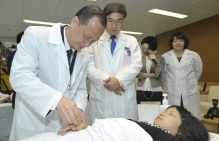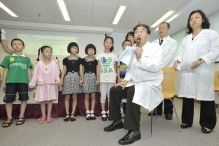CUHK
News Centre
CUHK & Shantou University Jointly ProveAcupuncture Improves Visual Outcomes in Treating Children’s Lazy Eye
Western medicine and traditional Chinese medicine appear not to be compatible at first glance because of differences in basics and theories. However, the continued effort on integrating the two to treat selected diseases has yielded encouraging results in recent years.
Lazy eye (or Amblyopia) in children is an important cause of visual impairment worldwide, with a prevalence of 3-4% in general. Professor Dorothy Shu-ping Fan, Professor of Department of Ophthalmology & Visual Sciences (DOVS) at The Chinese University of Hong Kong (CUHK) said, ‘If amblyopia is not treated in time, the chance of recovery is minimal. The best treatment period for obtaining good results is in children aged 3 to 6; moderate results can be obtained in children aged 7 to 12; the treatment effect is negligible in children aged 13 or above.’ Anisometropia (unequal refractive errors in the 2 eyes of an individual) is the most common cause of lazy eye. Correcting the refractive error by spectacles is the benchmark treatment for lazy eye patients aged 3 to 6; whereas spectacle correction plus occlusion therapy (covering the good eye to train the lazy eye) are the benchmark treatments for older children.
The DOVS of CUHK and the Shantou University have jointly conducted 2 clinical trials since December 2006, in which acupuncture is used as a supplementary or alternative treatment for lazy eyes in children in 2 age groups, aged 3-6 and 7-12 respectively. In these 2 randomized controlled trials, the research team, headed by Professor Dennis Shun-chiu Lam, Chairman of DOVS, designed a special combination of 5 acupuncture points, which is the first time ever used for treating human diseases, to treat 171 children who had lazy eye. It proves that acupuncture provides good sustainable therapeutic effect to spectacle correction and occlusive therapy for treatment of lazy eye in children. Professor Lam is pleased with the results, “Acupuncture can accelerate the treatment response, improve the overall treatment results and shorten the total treatment duration. Results of the first trial have already been accepted by one of the leading eye journals in the world.” He further commented that the study in lazy eye also sheds light on potential use of acupuncture in treating other eye disorders and diseases.
Professor Jian-hao Zhao, Professor of Joint Shantou International Eye Center (JSIEC) of the Shantou University and CUHK and the Chief Acupuncturist of the study, has performed tens of thousands of acupuncture treatment procedures for patients. He said, “With the use of disposable acupuncture needles, there is no risk of cross infection. Also, no serious side effects have ever occurred. Acupuncture is well tolerated by children as young as 3 years of age.”
Professor Ming-zhi Zhang, Professor and Executive Vice-Deputy Director of JSIEC supplemented that, “Acupuncture has been used in the treatment of a variety of eye diseases at JSIEC since 2005. Over 150,000 acupuncture treatment procedures have been performed and acupuncture as a treatment modality is well accepted and received by patients in JSIEC and mainland China at large.”
CUHK is now conducting acupuncture research for treating various eye disorders and diseases including lazy eye, myopia, presbyopia, glaucoma, dry eye, corneal ulcer and limbal stem cell disease. Interested individuals can call the hotline 2762-3041 during office hours for more information.
(From left) Prof. Dorothy Shu Ping FAN, Professor, Department of Ophthalmology and Visual Sciences, CUHK; Prof. Jianhao ZHAO, Professor, Joint Shantou International Eye Center (JSIEC) of Shantou University and CUHK; Prof. Dennis Shun Chiu LAM, Chairman, Department of Ophthalmology and Visual Sciences, CUHK; Professor Mingzhi ZHANG, Professor & Executive Vice-deputy Director, Joint Shantou International Eye Center (JSIEC) of Shantou University and CUHK
Prof. Jianhao ZHAO, Professor, Joint Shantou International Eye Center (JSIEC) of Shantou University and CUHK demonstrates the technique of acupuncture treatment for lazy eyes in children


